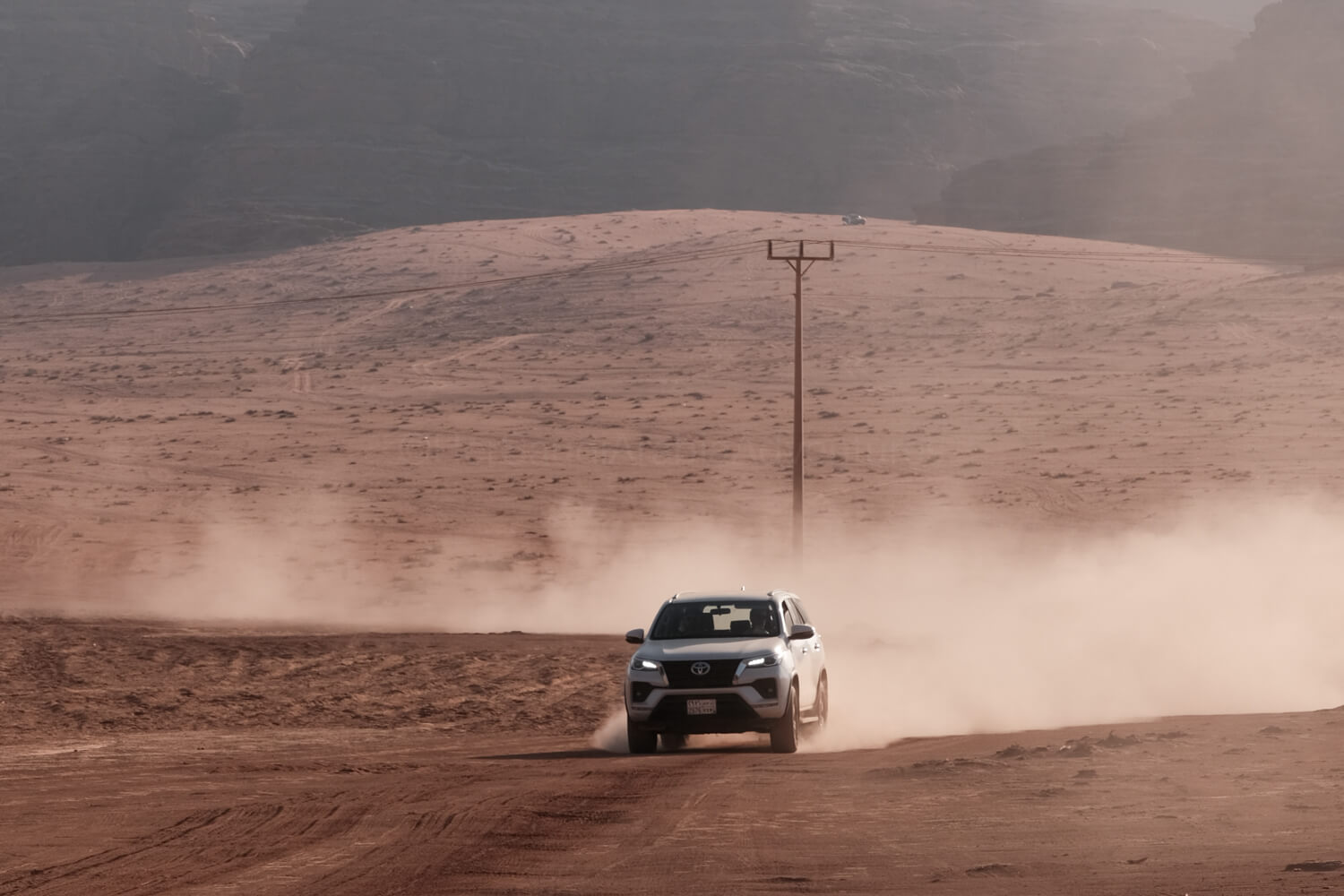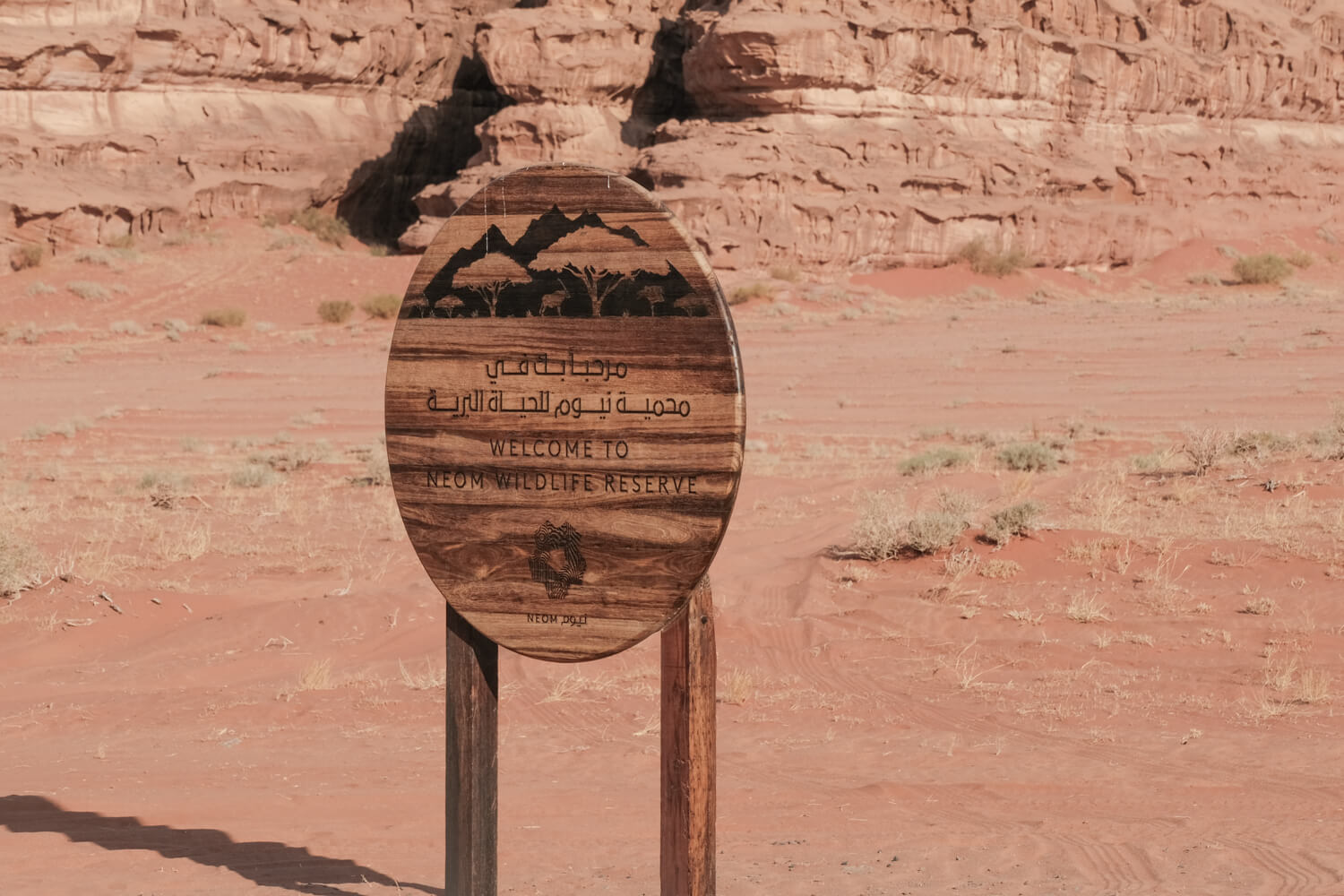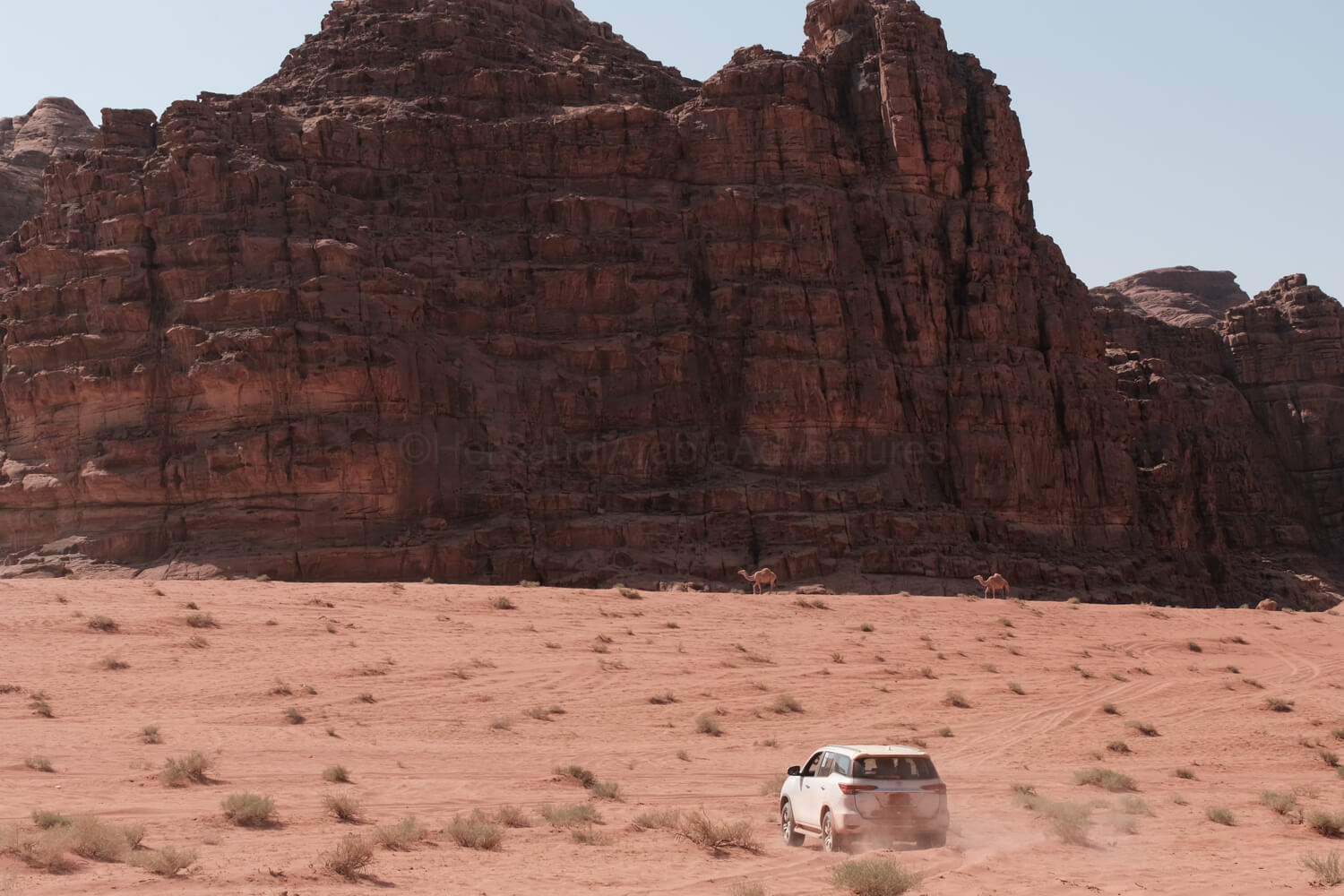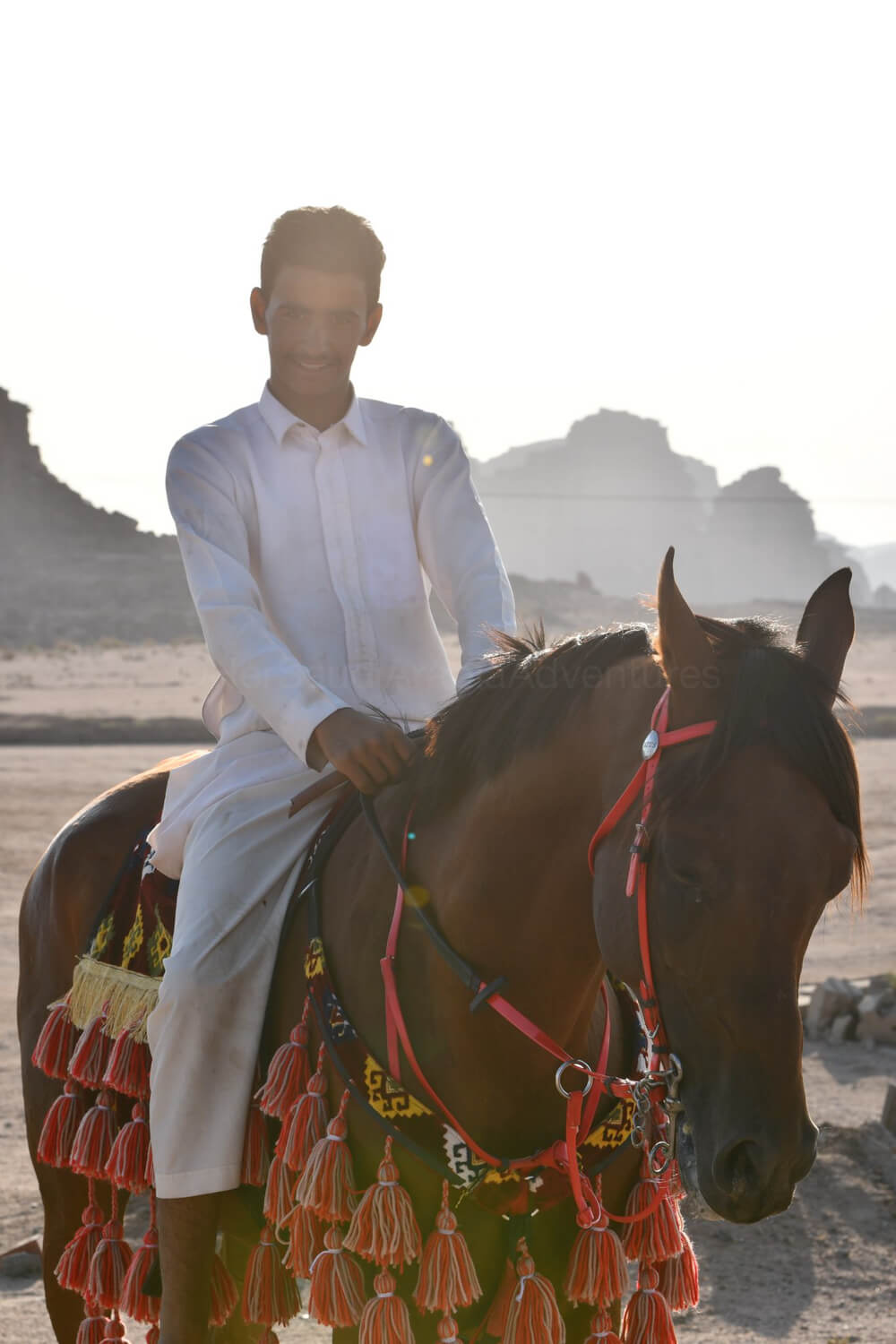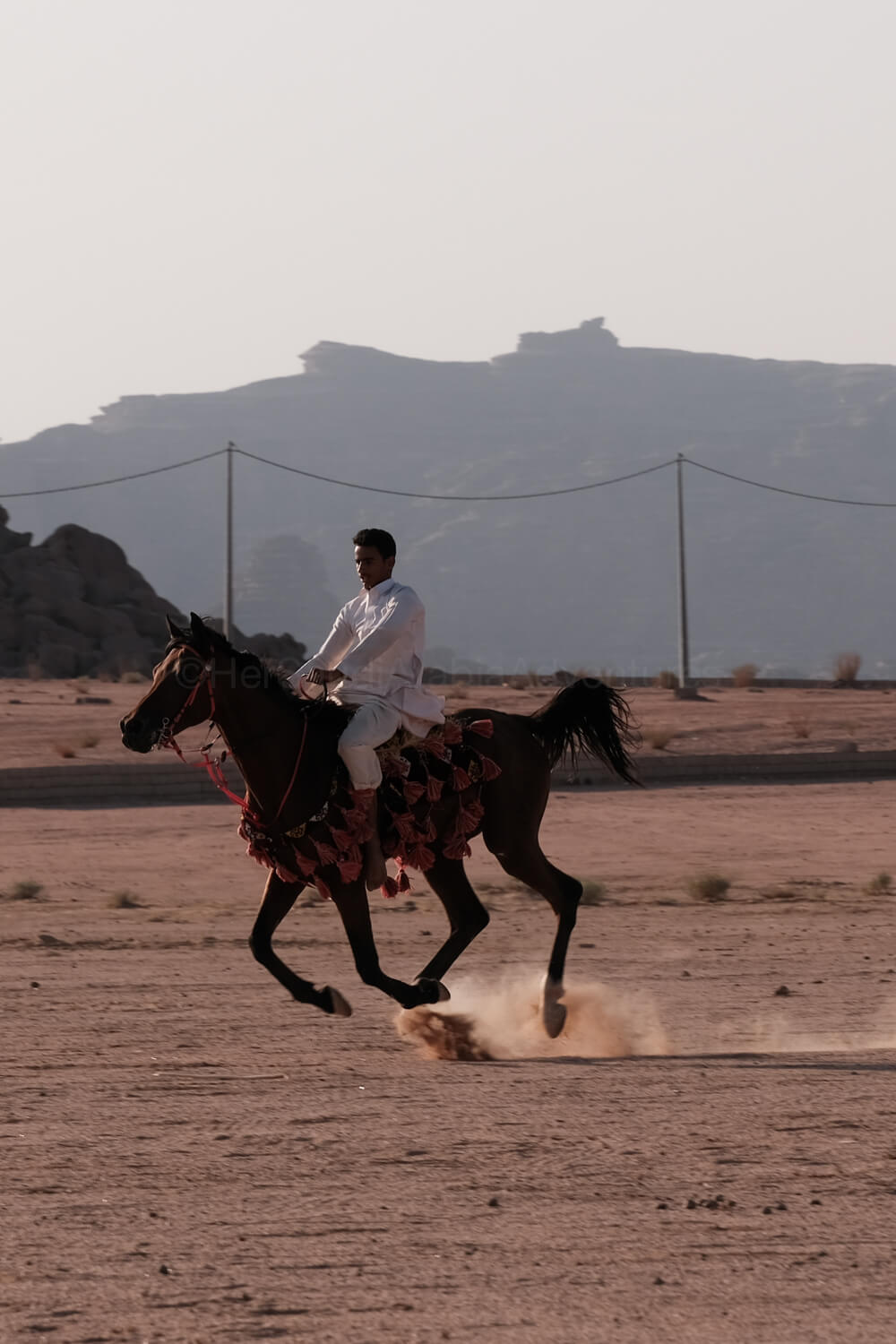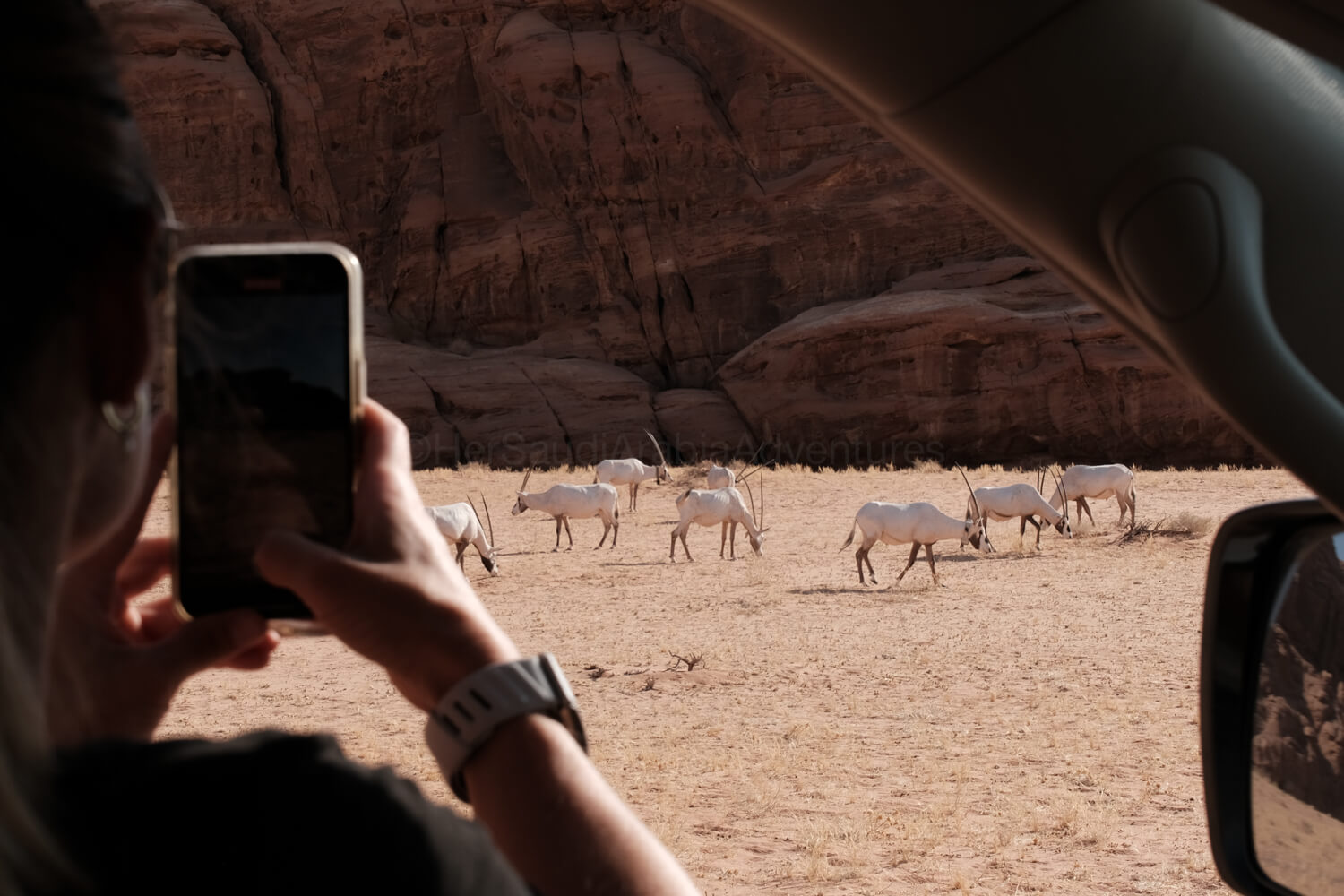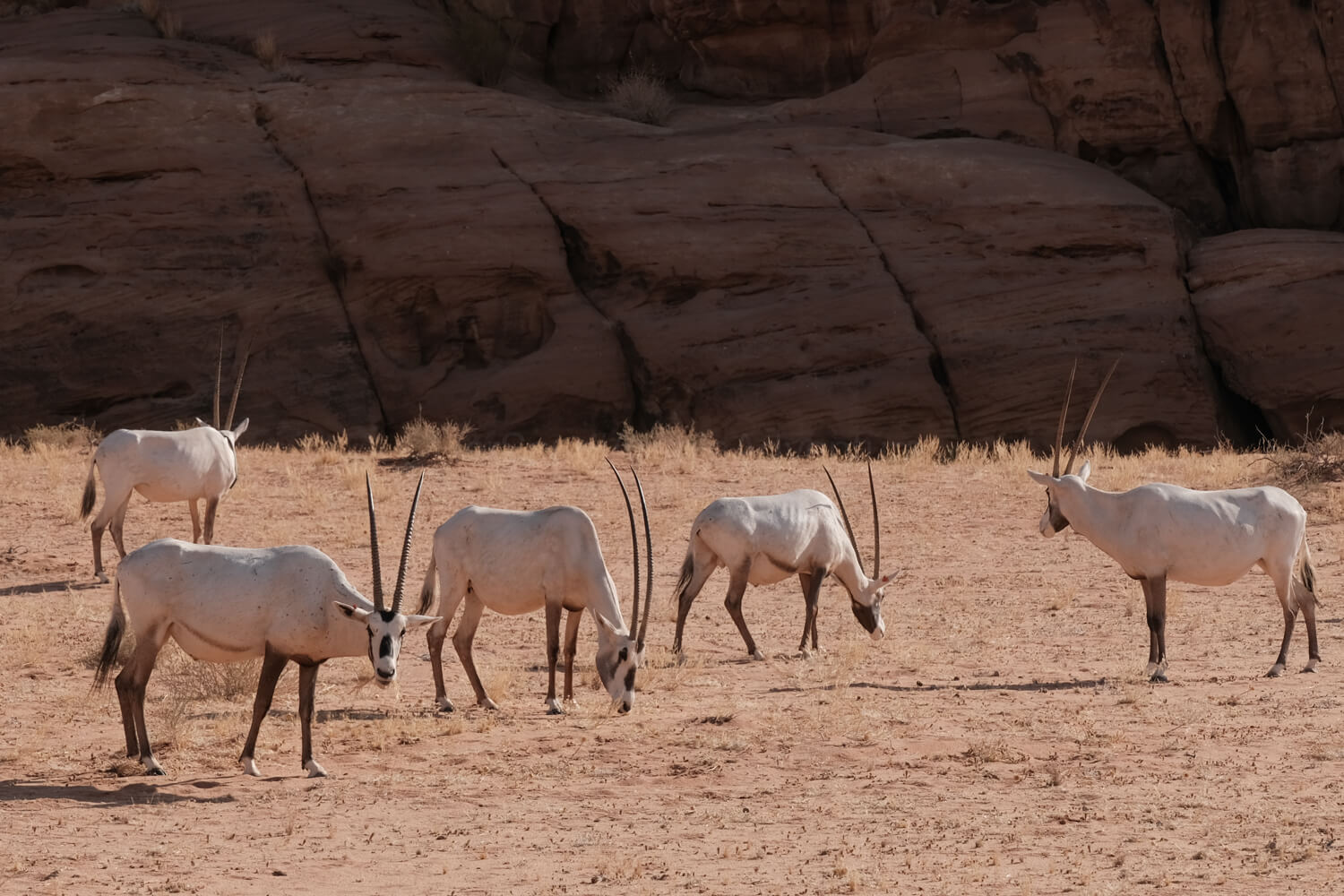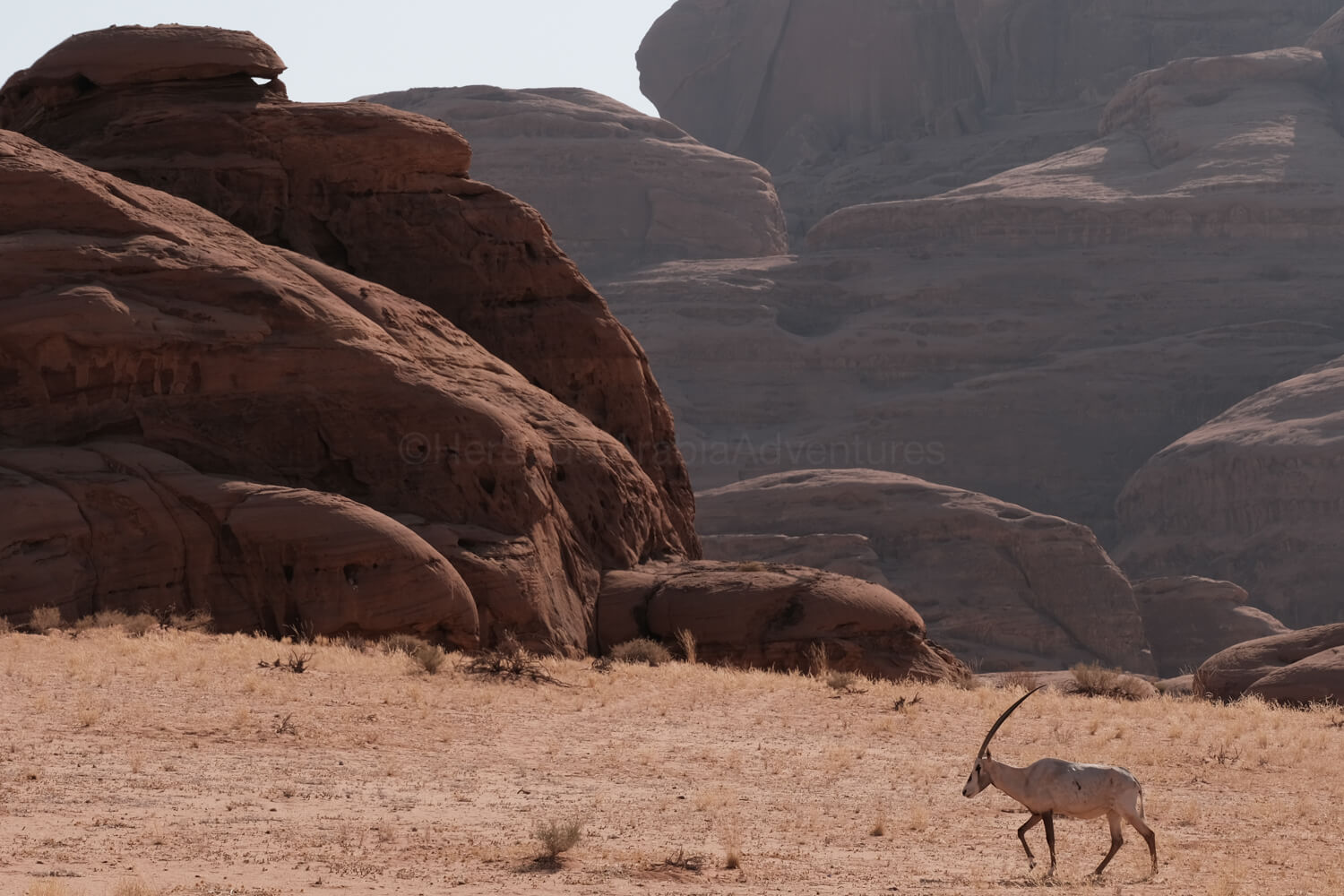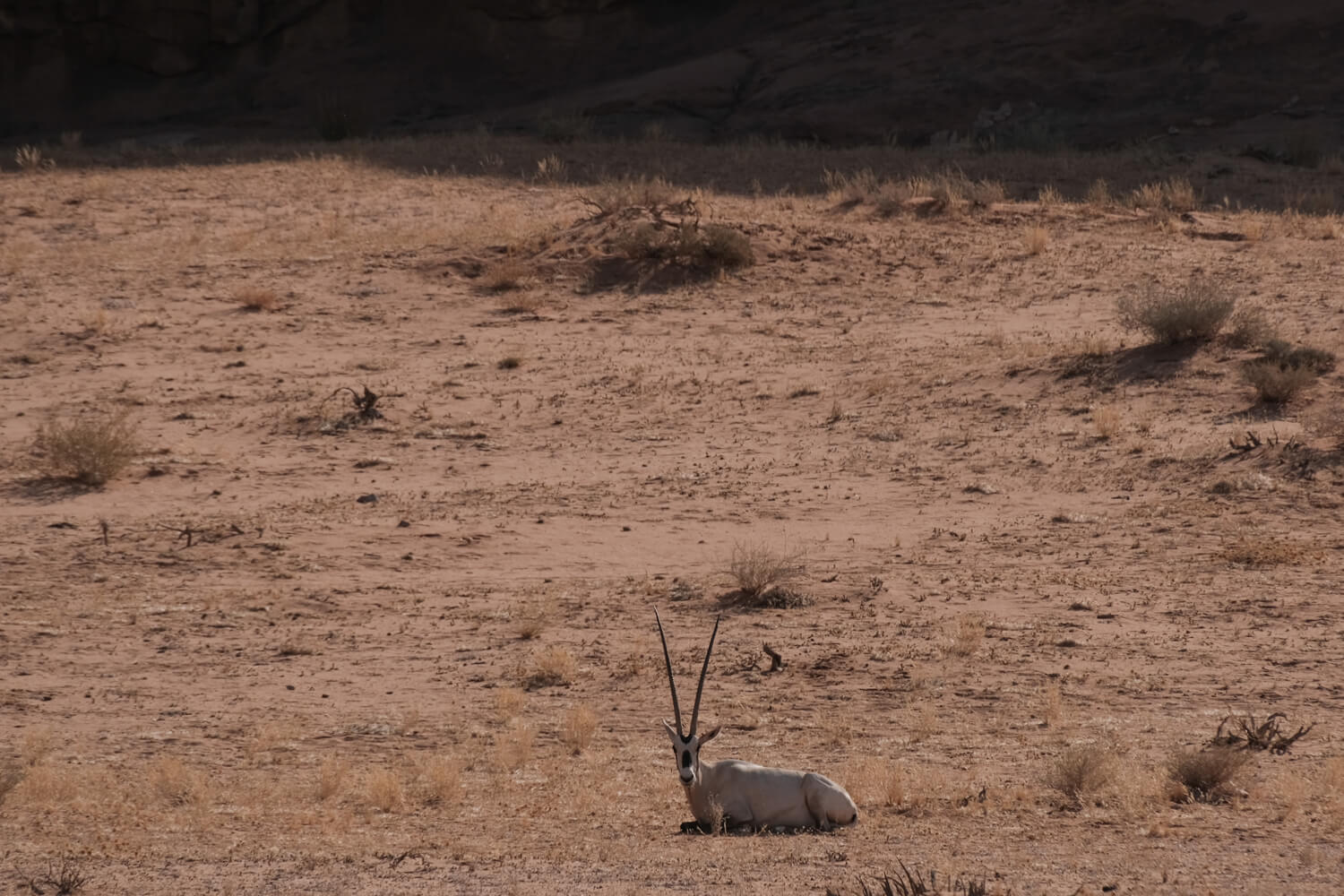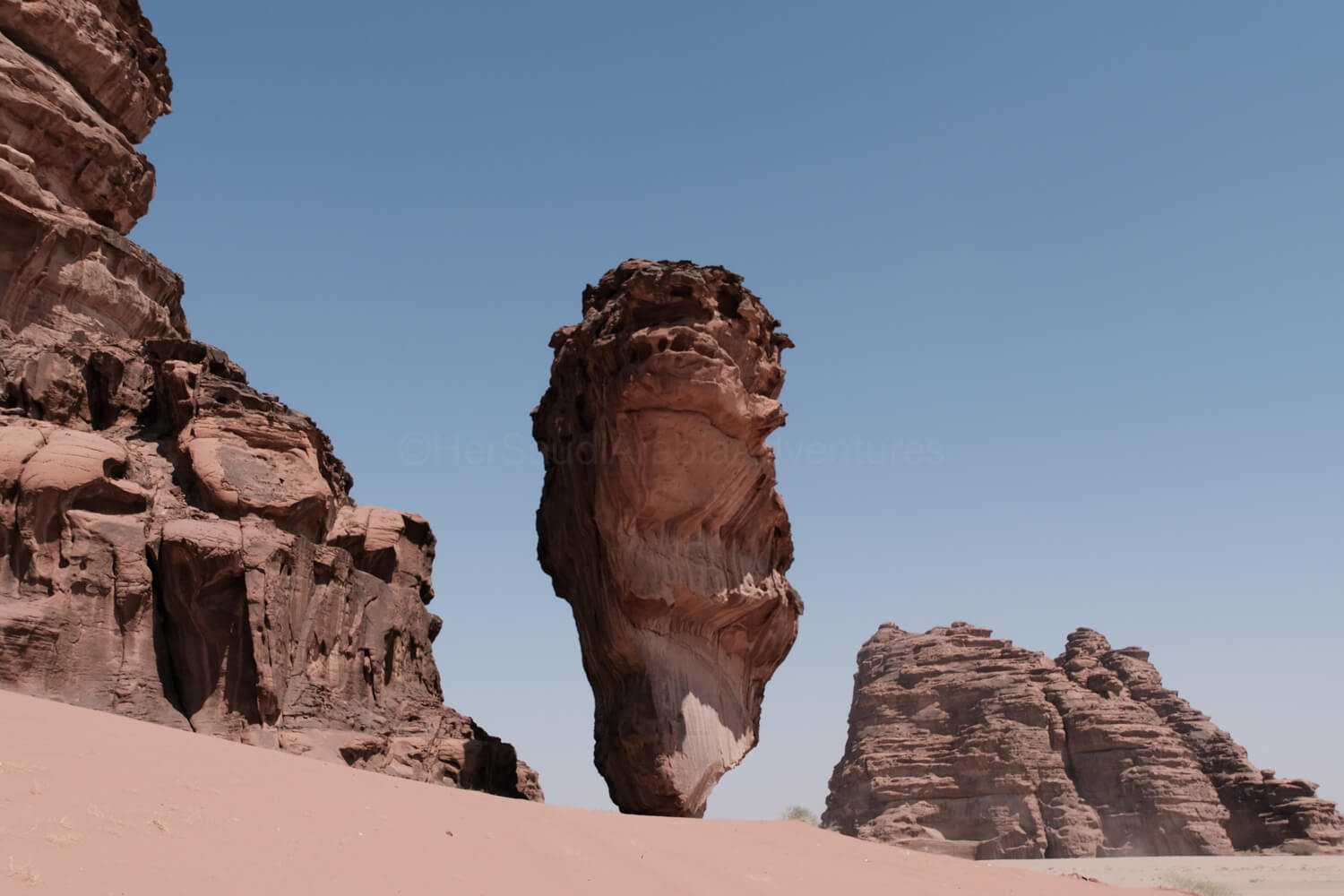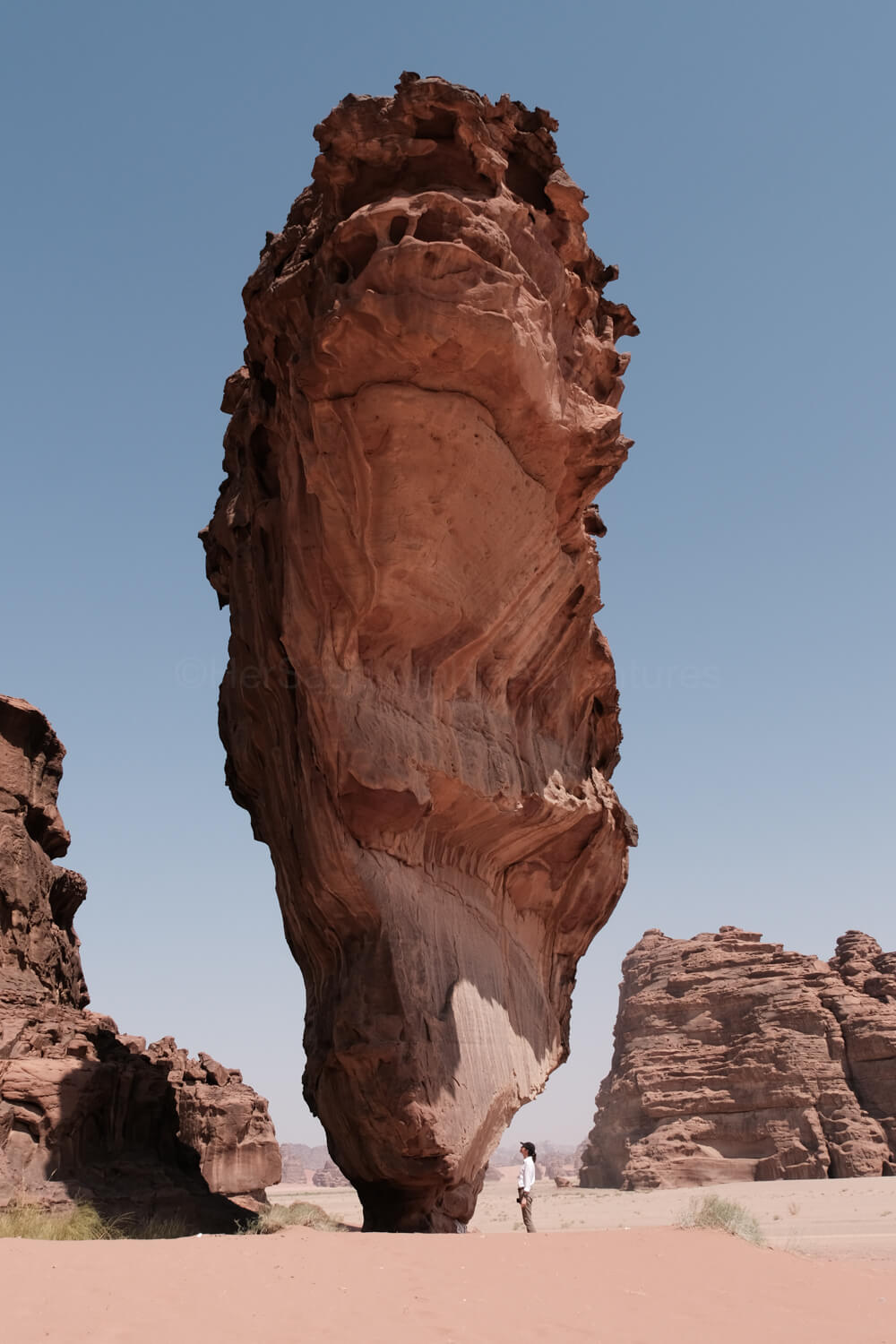NEOM Nature Region
The Bajdah wildlife reserve is part of the expansive nature region within NEOM and a great destination for nature and wildlife lovers. NEOM’s nature region covers a vast area of 25,000 km², and aims to protect and preserve the biodiversity of the Arabian Peninsula. NEOM is best known for The Line, a 170-kilometre-long city that stretches across the region. But its vision goes beyond the futuristic city. It plans to protect 95% of its land and sea, focusing on conservation and sustainability, including areas like NEOM Bajdah Wildlife Reserve.
The NEOM Bajdah wildlife reserve
In 2022, NEOM started its rewilding programme by bringing back animals like Nubian ibex, Arabian oryx, red-necked ostriches, Arabian gazelles, and antelopes. During the first breeding season, most of them successfully had offspring. Therefore, the reserve now plans to expand its rewilding efforts soon by reintroducing predators such as caracals, Arabian lynxes, and cheetahs in the Bajdah Wildlife Reserve.

Visiting the NEOM Bajdah wildlife reserve
I visited the Bajdah wildlife reserve in August this year and left very early to arrive by the 9am opening. This gave us the best light for photographing the animals and a better chance to spot them, as they are most active during the cooler hours of dawn and dusk.
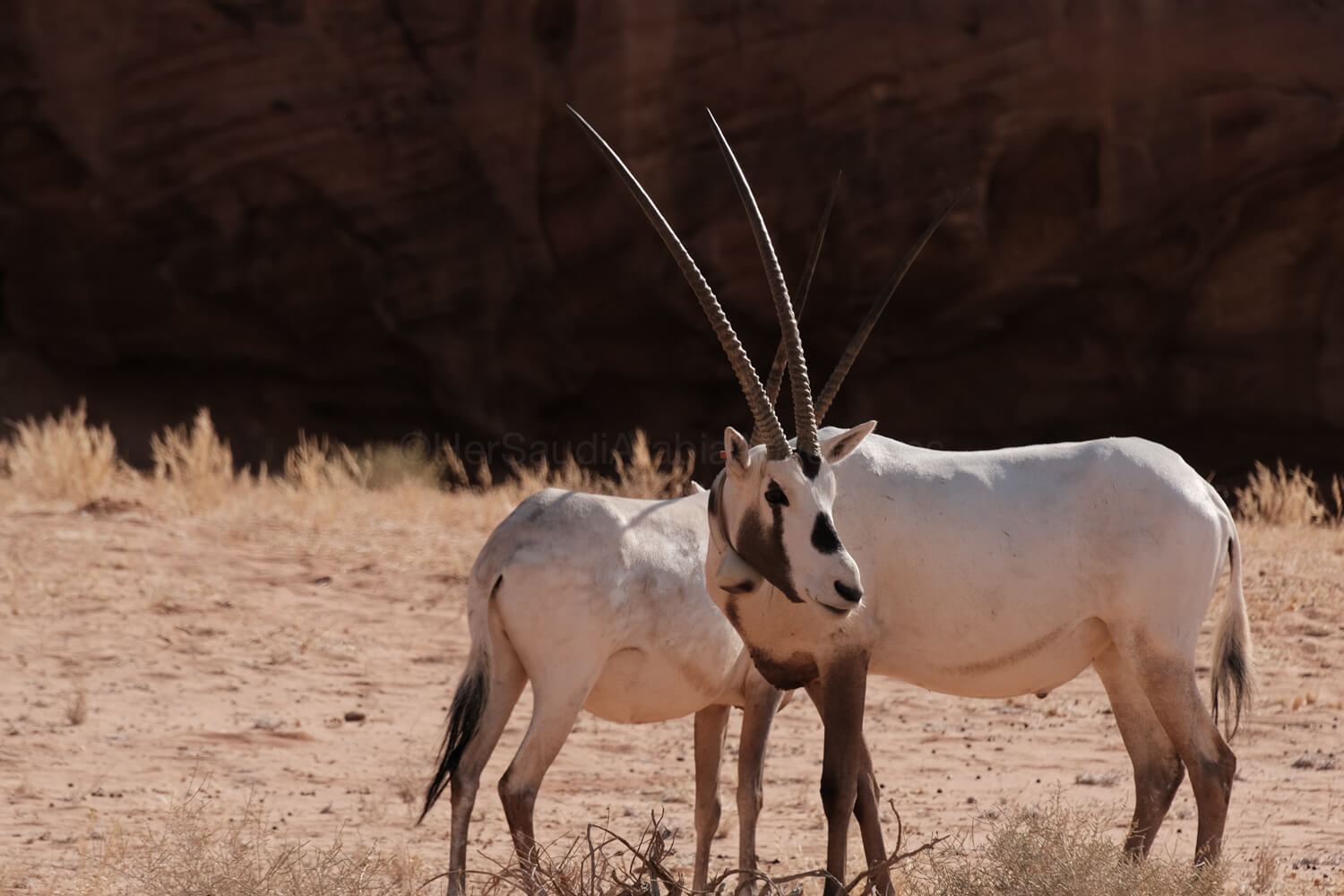
Getting to Bajdah wildlife reserve wasn’t too hard since we know the area quite well. As we prepped the car for the off-road section, we noticed a young man riding a horse and dressed in a thobe, the traditional white tunic.
You’ll need a 4×4 to visit the reserve because some areas are tricky to access. Visitors must stay in their vehicles except at the Secret Garden, a stunning spot where you can go rock climbing. The climbing equipment was installed during the 2021 Rise 100 event, which brought together 80 climbers to create 100 world-class routes. The speed limit in the reserve is 40 km/h, and honestly, I wouldn’t try going any faster—you’d risk missing a chance to spot the animals in the Bajdah Wildlife Reserve.
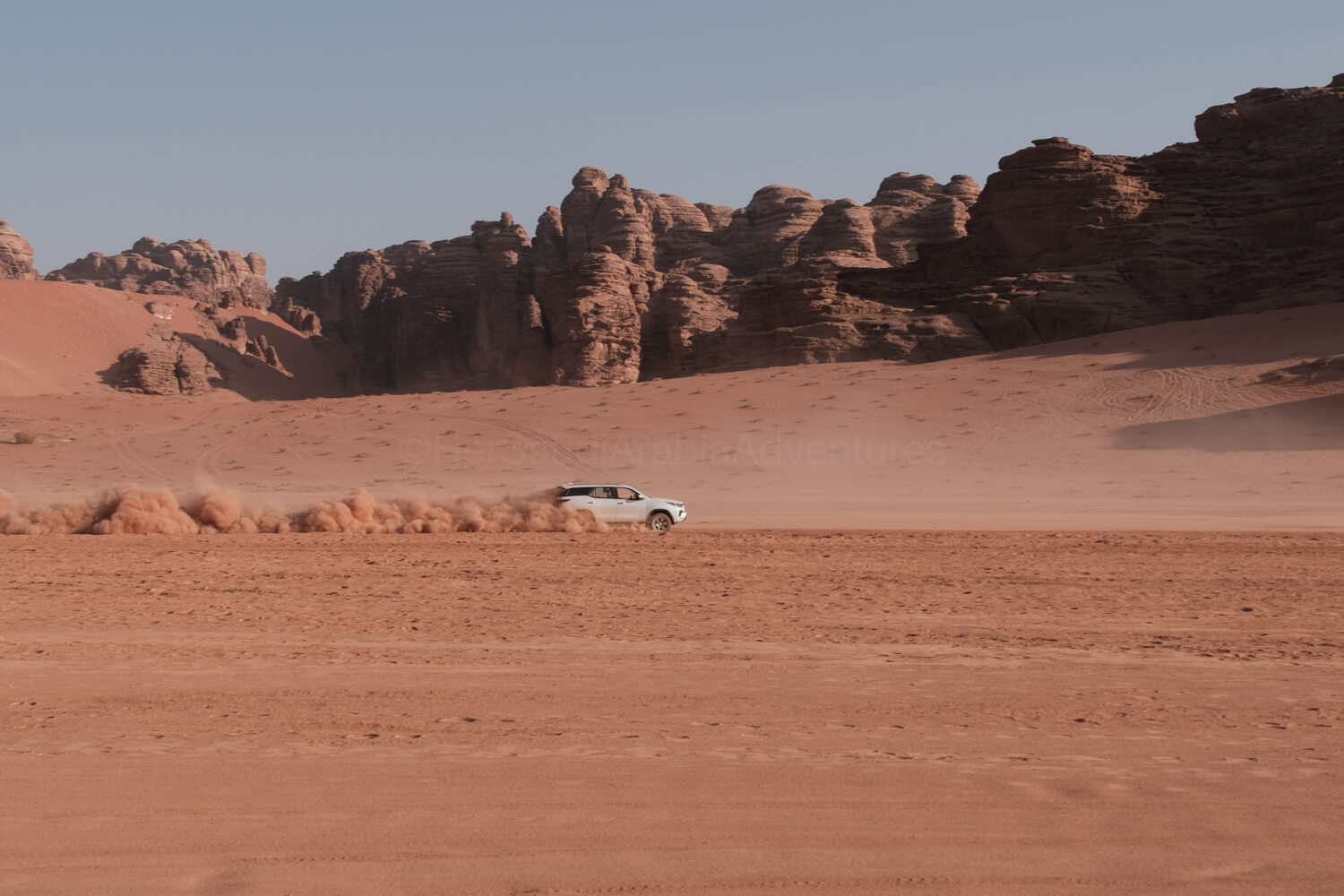
Spotting the wildlife
We travelled in two cars. My Swedish friend, an experienced off-road driver, was behind the wheel. It was already a second time at the NEOM Bajdah Wildlife Reserve and she has an incredible eye for spotting wildlife. Countless times, she pointed out gazelles far in the distance, and it would take me a moment to make out the shape and realise she was right.
Whether it was luck or our early start, we had the place to ourselves and didn’t meet any other visitor. It wasn’t too hot either. Although it was late August, heading out early meant the animals were probably going to be out.
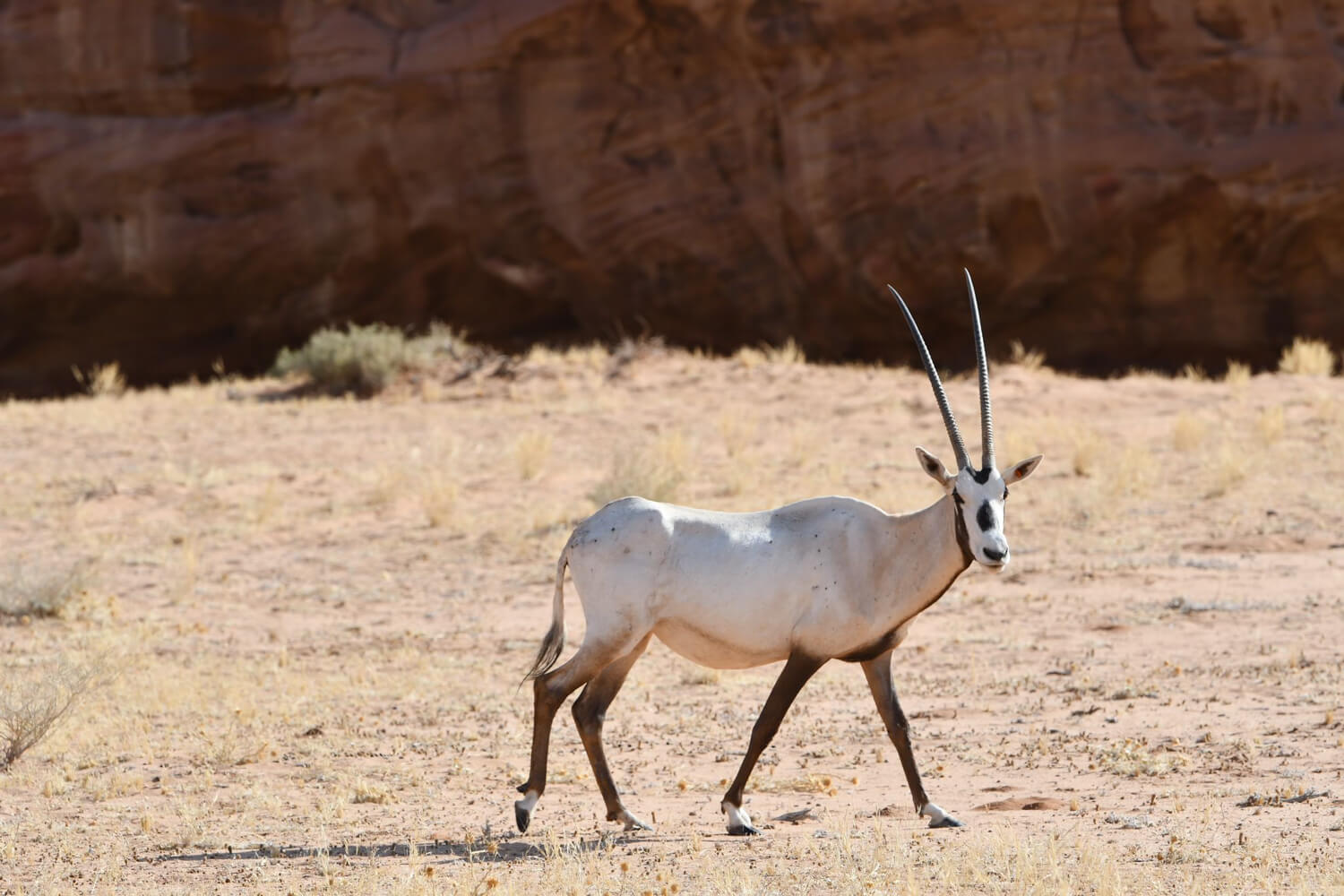
Gazelles
The first animals we spotted were gazelles, but they were far off and not close to the path. Thankfully, we saw another group later. They were rarely alone, typically staying in groups, except for the lone one we noticed near the fence at the end of the trip.
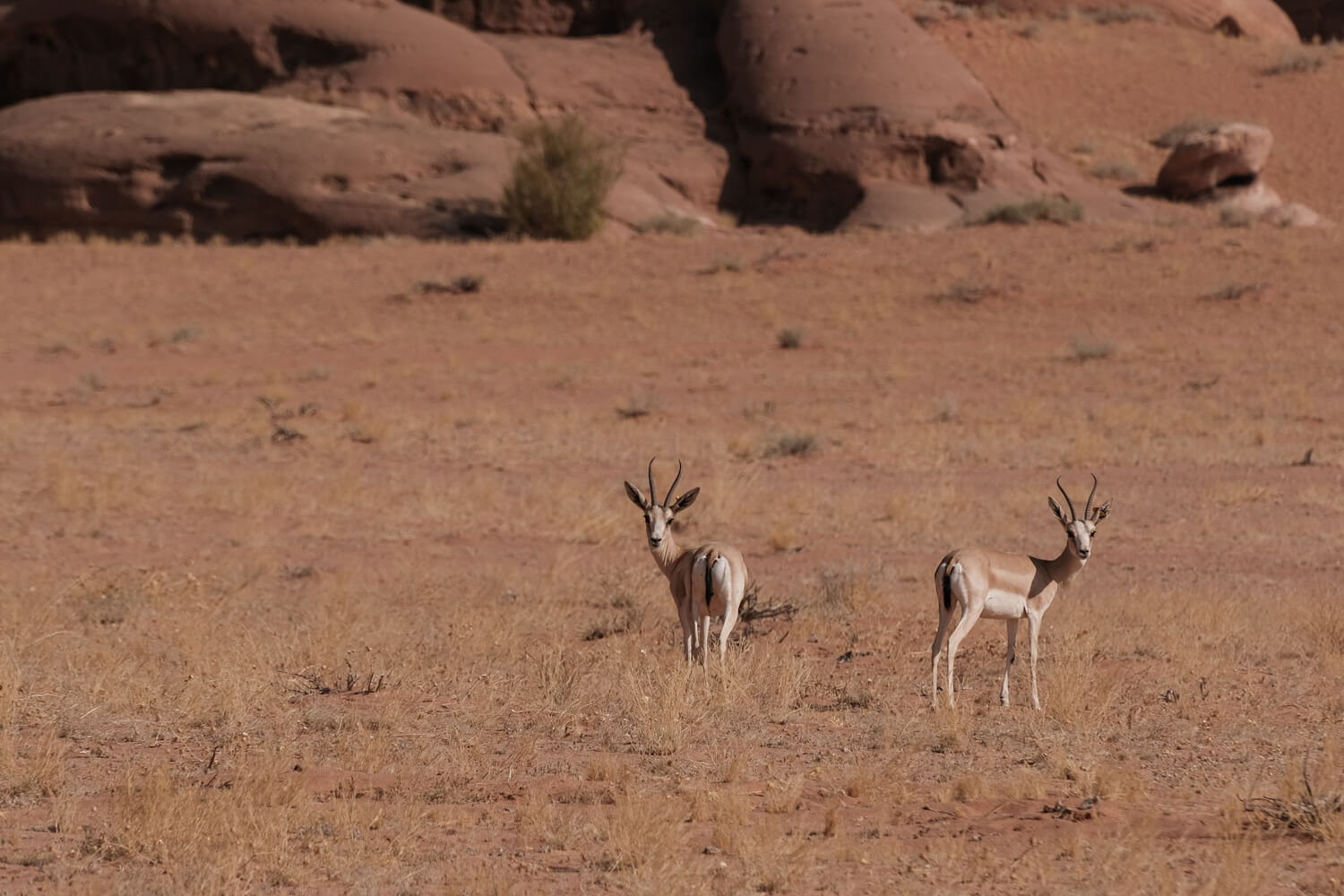
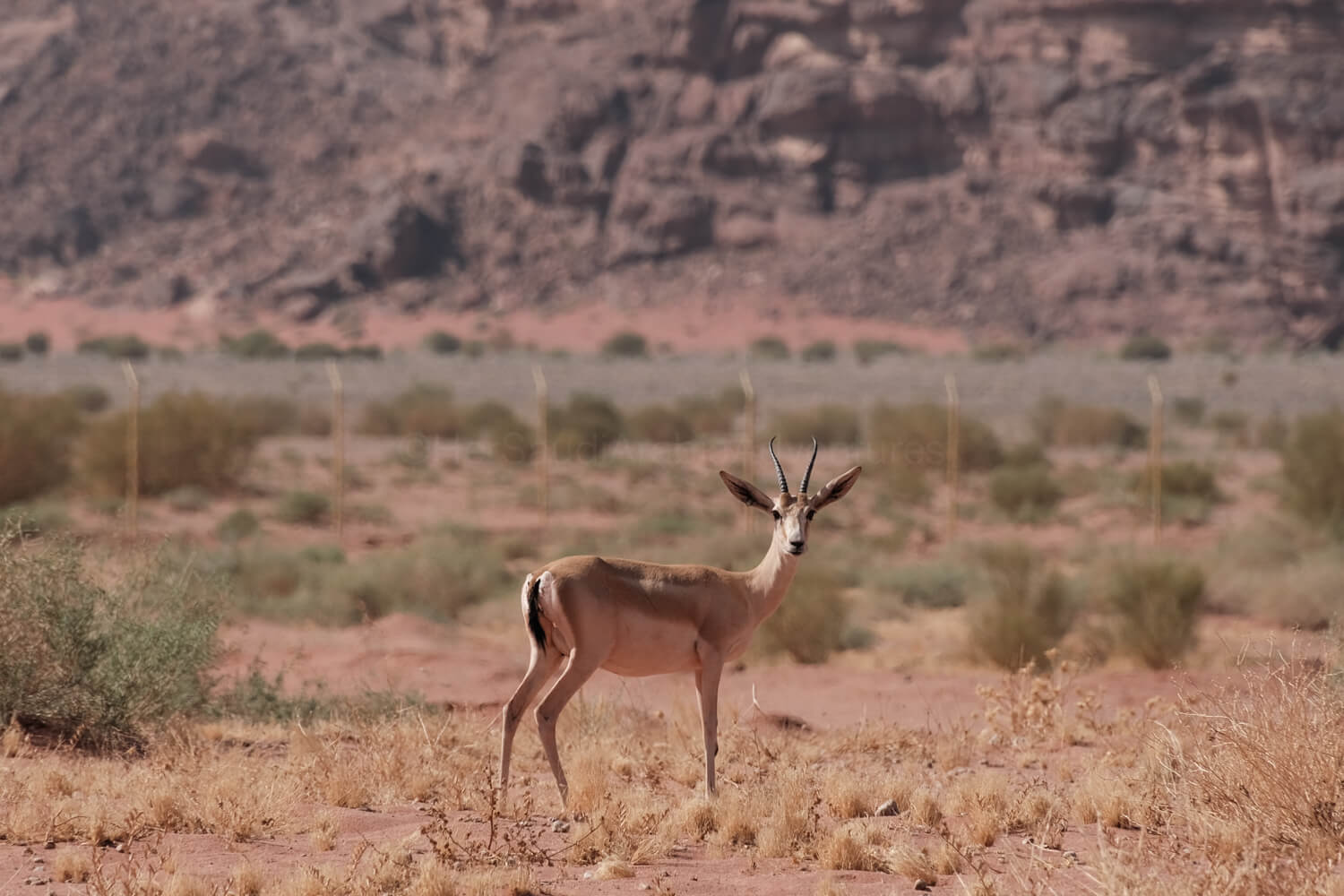
Arabian oryx
A little further along, we spotted a group of Arabian oryx. This was my first time to see them and we were lucky to be able to see them that close. They are elegant and very graceful with their white coats reflecting the sunlight to keep them cool in the heat.
In mid-20th century, the Arabian oryx had been declared extinct in the wild because of overhunting. However thanks to conservationists and breeding programs it was brought back to life, and today, it lives in protected reserves of Arabia.
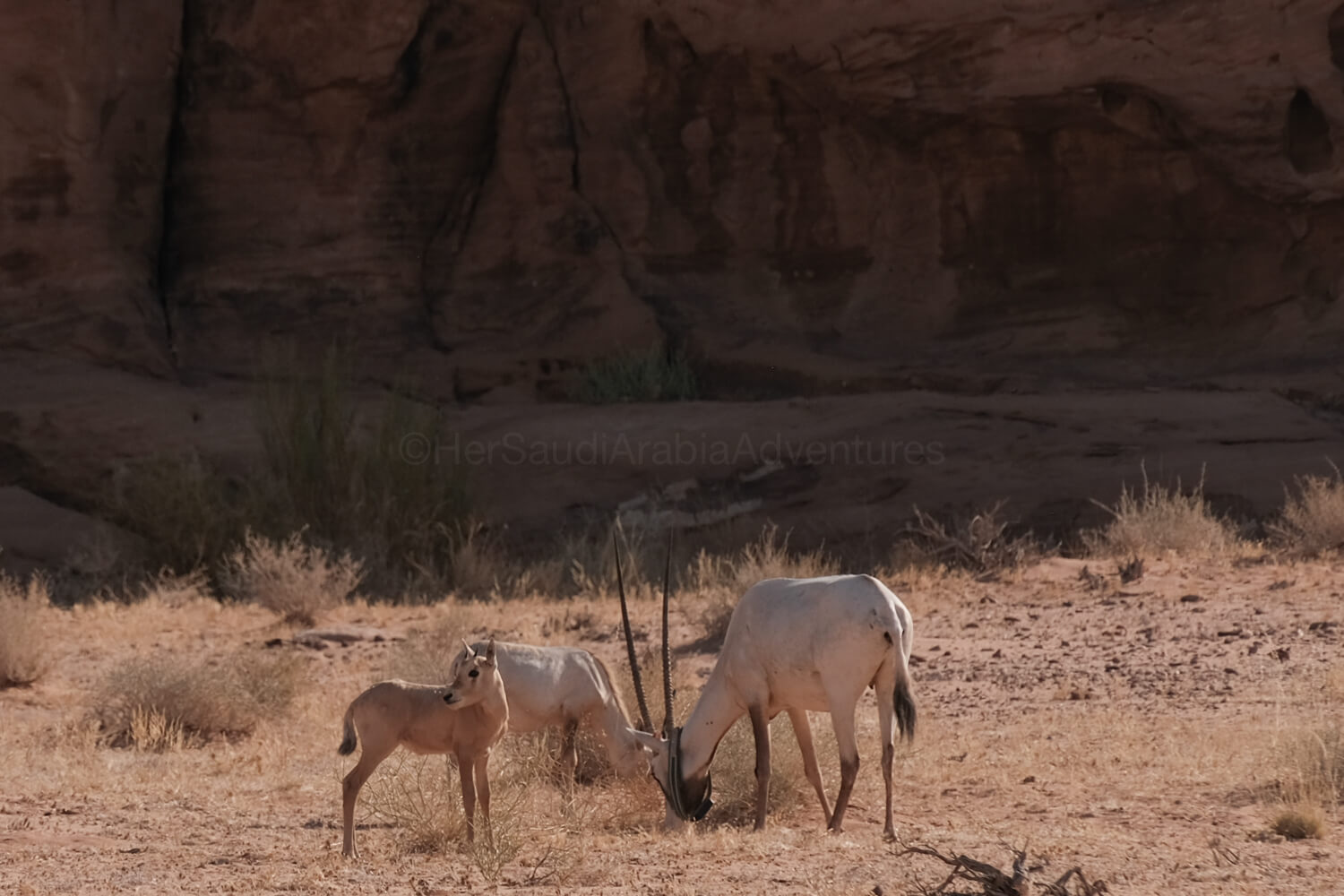
Driving through the Hisma Desert
Towards the end of the visit of the Bajdah Wildlife Reserve, we drove through an arch surrounded by stunning scenery. The rock formations in the Hisma Desert are spectacular. Even more so in the evening when the sun sets.
After passing the arch, spotting wildlife became more difficult. We watched the rock formations carefully, hoping to see ibex, but it was already quite hot outside. That part of the road is absolutely stunning, and driving through the rock formations feels like an attraction in itself. Some sections of the path can be tricky for inexperienced drivers, which is why it’s a good idea to travel with two cars to avoid getting stuck in the sand.
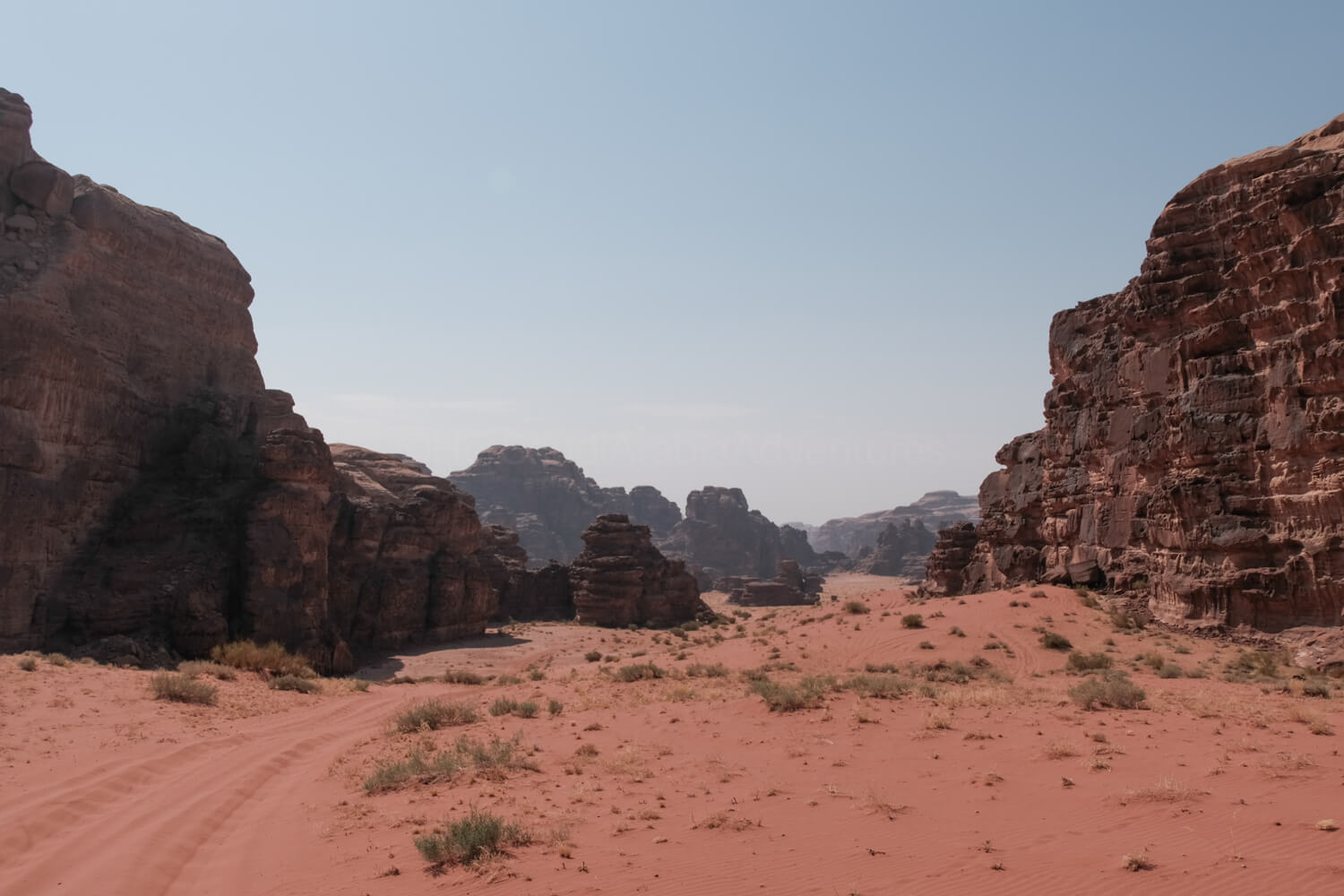
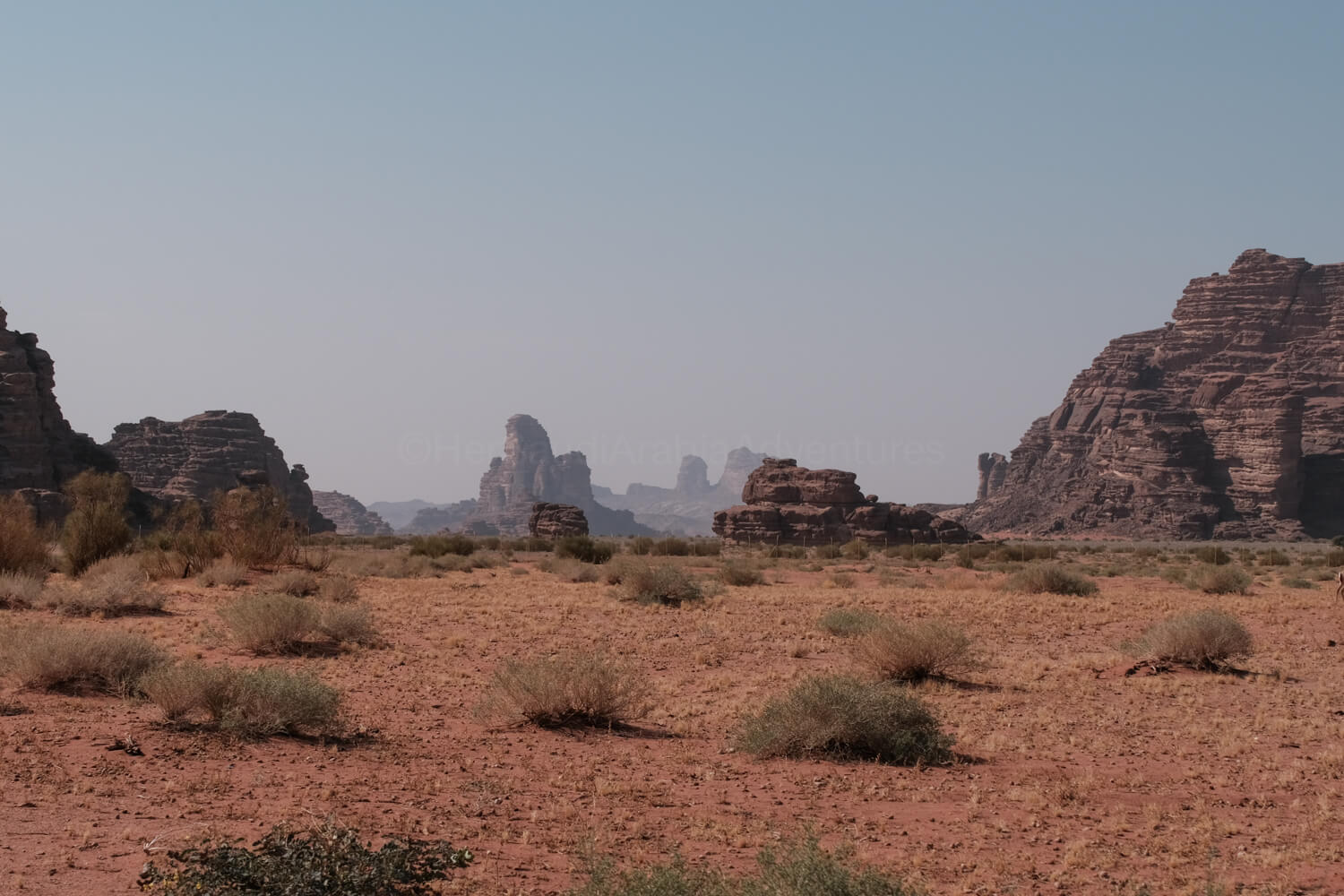
Unfortunately, we didn’t spot any ibex this time, and the red-necked ostriches hadn’t been introduced yet. But this reserve has so much to offer, and I’m already looking forward to going back to NEOM Bajdah Wildlife Reserve as they gradually release more wildlife.
The Rock of Umm Sarhaij
After our visit to the NEOM Bajdah Wildlife Reserve, We drove to the famous Rock of Umm Sarhaij also known as Mushroom Rock and it was incredible to see up close. The rock is about 30 metres tall but not easy to spot because its unique shape only reveals itself from certain angles. For scale, you can spot me next to it, I look tiny!
The Rock of Umm Sarhaij was naturally shaped over millions of years by wind and rain. The wind gradually eroded the softer parts of the rock, which created its distinctive mushroom shape. The area in the Hisma desert is full of unusual rock formations like this.
The rock is situated outside of the Bajdah Wildlife Reserve. To make it easier to find, you can find the coordinates here: 28.414264336318887, 35.79759034797392
How to visit the NEOM Bajdah Wildlife Reserve
You’ll need to book a pass to visit the Reserve. You can do this through the Discover NEOM app, available on the App Store. Once downloaded, navigate to the “Nature Region” section in the menu to find the booking option.
Make sure you have a 4×4 vehicle and off-road driving experience, as the terrain can be challenging in the reserve. Since phone coverage is limited in many areas of NEOM, I suggest taking a screenshot of the pass before heading out to make sure you have access when you arrive.
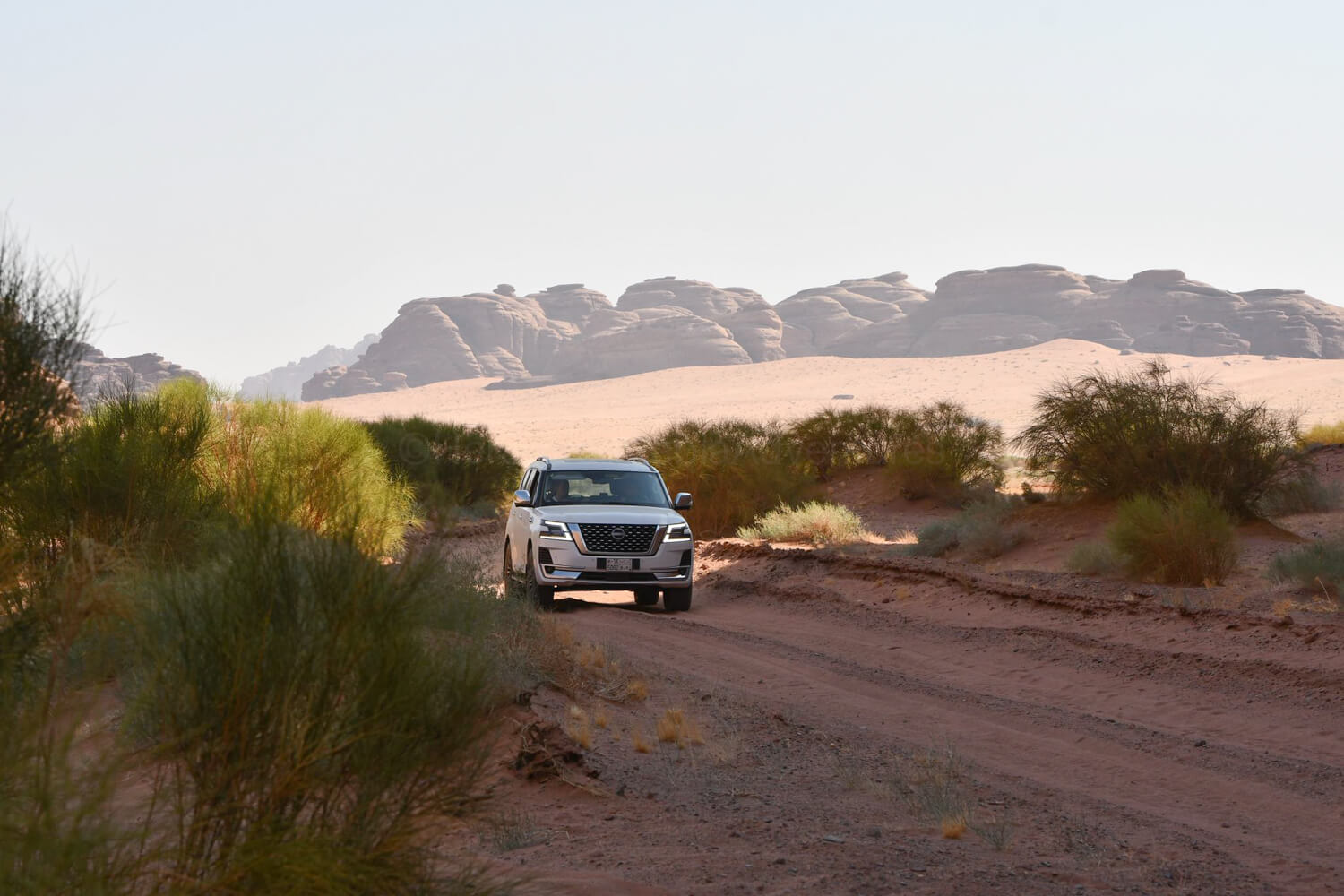
Getting there
Drive north for about 30 km, passing through Bajdah town. After that, follow the track going slightly to the right. Keep an eye out for signs directing you to the Main Gate of the Reserve in Bajdah Wildlife Reserve.
There are bathrooms near the turnoff by the “Bajdah” sign. Make sure to stop here, as there won’t be any other facilities further along. If your phone is running out of battery, the toilets also have USB ports (just remember to bring your own cable).
